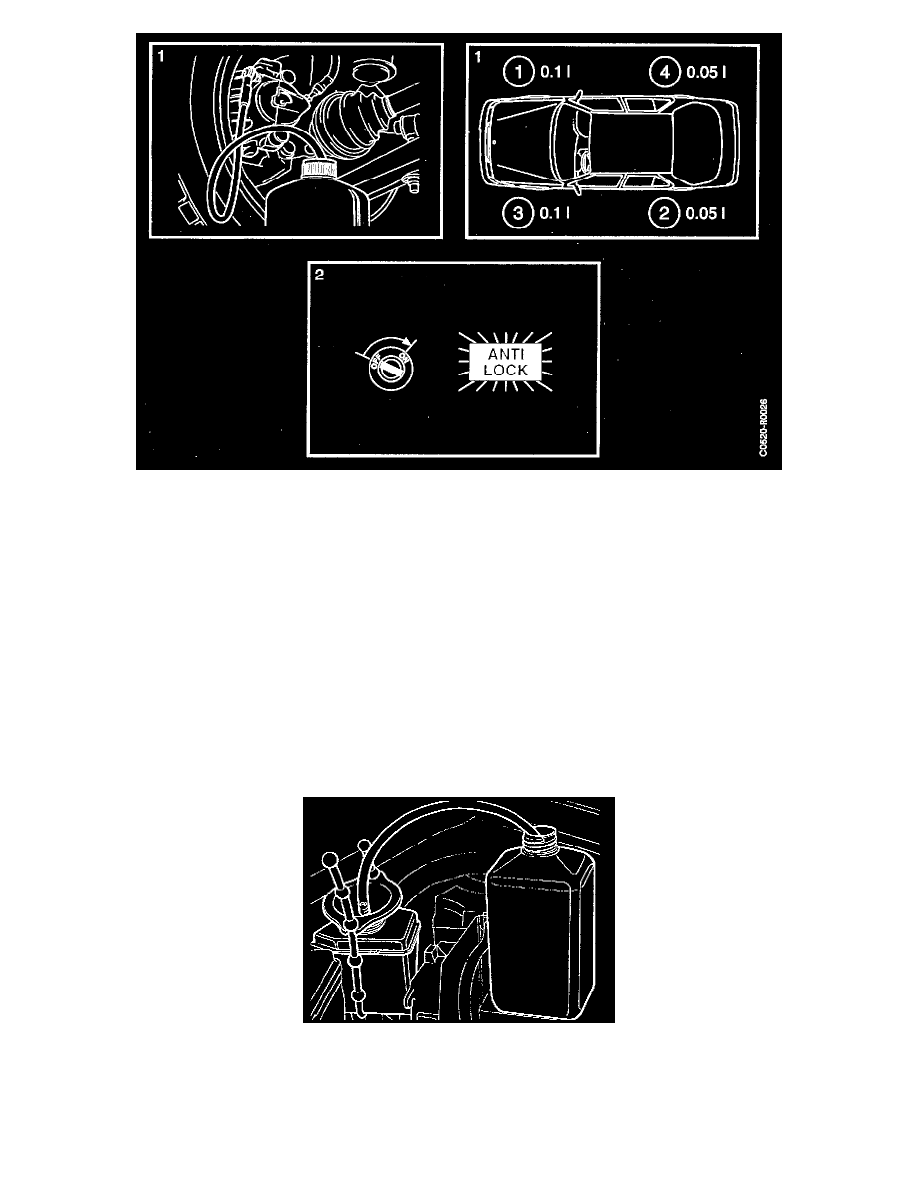9000 Hatchback L4-2290cc 2.3L DOHC Turbo EFI (1994)

1. Connect a brake bleeder hose to the bleed nipple.
-
Get a helper to depress the brake pedal at least ten times for each brake caliper until the brake fluid visible in the transparent plastic hose is
free from air bubbles.
-
The bleed nipple must be opened before the brakes can be bled.
-
Bleed the brake system in the following order:
RH front wheel
LH rear wheel
LH front wheel
RH rear wheel
-
When changing the brake fluid, the contents of the reservoir should first be removed by suction.
-
The reservoir should then be filled with fresh brake fluid.
-
The amount of fluid drained from each brake caliper should be as indicated in the figure above.
-
Check the level of the brake fluid in the reservoir to ensure that the reservoir is not emptied.
2. Switch on the ignition and check that the Antilock Brake System (ABS) warning lamp on the dashboard goes out (cars with ABS).
-
Drive the car and test the brake system, braking normally and also braking with ABS if the car is so installed.
-
Check the level of the brake fluid.
Using Bleeder Unit
1. Unscrew the cover on the brake fluid reservoir.
-
Connect a topping-up bottle to the topping-up fitting (supplied in brake bleeder unit kit part no. 88 19 096) and clamp the topping-up fining
onto the brake fluid reservoir to eliminate the risk of the reservoir being drained.
